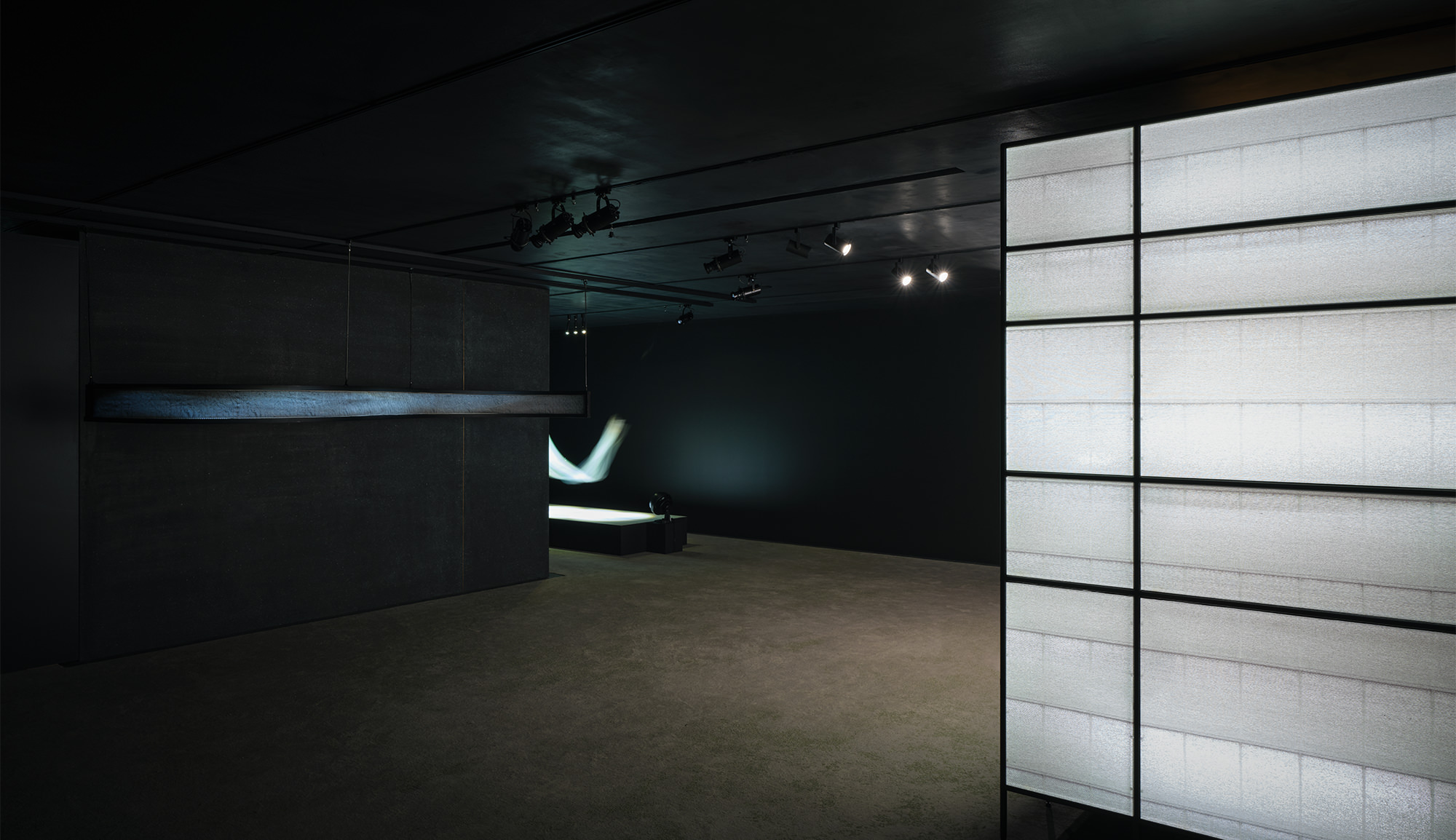ARCHIVE
Ambient Weaving II
- Dates
- 27 October 2023-17 March 2024
- Hours
- 10:30–18:00
(except holidays and between Saturday December 30, 2023 and Wednesday January 3, 2024,
admission until 15 minutes before closing)
- Admissions
- Free
- Research and Development
- HOSOO Co., Ltd. and Yasuaki Kakehi Laboratory,
the University of Tokyo, and ZOZO NEXT, Inc.
- Organizers
- HOSOO Co., Ltd. and ZOZO NEXT, Inc.
- Technical Contribution
- NIPPON SHOKUBAI CO., LTD, FUJIFILM Corporation.
The HOSOO GALLERY is pleased to announce the exhibition “Ambient Weaving II.”
Since 2020, HOSOO Co., Ltd. has been working with the Yasuaki Kakehi Laboratory of the University of Tokyo and ZOZO NEXT, Inc. to develop new textiles that are both functional and beautiful, combining traditional craftsmanship and cutting-edge technology. The HOSOO GALLERY presented the results of their research in 2021 with the exhibition “Ambient Weaving.” The present exhibition will showcase the developments of the same collaboration, continued over the subsequent two years. The textiles on display make visible the phenomena that occur between humans and their environment including colors and light, perceivable only under specific environmental conditions.
Recently, much attention has been given to the relationship between the environment and technology with the advent of the Anthropocene. Technology has had a significant impact not only within the context of scientific and industrial evolution, but on natural philosophy and cultural systems as well. New technologies play a particularly important role in shaping space. Today, as information space grows ever larger, the definition of the environment is undergoing even more transformations. Indeed, the very concept of nature needs to be redefined.
“Ambient Weaving,” a concept forged in the course of the joint research project, refers to a textile reflecting environmental information, or textile into which the environment itself is woven. Weaving is one of the oldest technologies, believed to have been established more than 10,000 years ago. In ancient times, textiles were created by making threads from common plants and trees, dyeing and weaving them. It is no overstatement to say that textiles are a medium that envelopes the natural environment in which humans live. At the same time, textiles have served as partitions separating humans from their environment, either as carpets or as spatial enclosures. Unlike walls that completely shut off the environment, textiles sometimes let light and wind in. They can also generate a new environment within the space by triggering color phenomena and tactile experiences. This exhibition will explore the possibility of environment-creating textiles as a logical continuation of the previous iteration of “Ambient Weaving.” This type of textile is made possible by the sophisticated technique of Nishijin, developed over 1,200 years. By weaving cutting-edge materials into the weft, we have realized textiles with functionality that responds to changes in environmental conditions.
The most significant feature of the present show is the juxtaposition of prototypes with the tea room “Ori-An,” an enclosure constructed of a shōji-like gauze made of washi paper threads using the traditional Nishijin technique of sha. One origin of the tea room is found in the spatial enclosure that served as a place where people could gather. Going back to this beginning, the Ori-An aims to reflect on the nature of space by proposing a uniquely contemporary tea ceremony culture, with textiles as the starting point. By showing it with a selection of prototypes, “Ambient Weaving II” seeks to redefine the environment, and ultimately nature itself, while connecting to a variety of cultural backgrounds.
Ambient Weaving II
Scenography: SUO
Curation: Kumiko Idaka
Visualization/Digital Textile Design: Shoya Dozono
Photography: Kotaro Tanaka
Promotional art: Akihiro Morita
PR: Momoko Aoyagi
ZOZO NEXT, Inc.
Satoshi Nakamaru, Kotaro Tajima, Kayato Sasaki, Motoki Takano, Michika Saji
Yasuaki Kakehi Laboratory, the University of Tokyo
Research/Artwork: Yasuaki Kakehi, Yumi Nishihara, Yahui Lyu
Tea Room Ori-An
Architect: SUO
Color Direction/Textile Design: Mae Engelgeer
In collaboration with Reijiro Izumi (president, SABIÉ), Tesera Co., Ltd., and Kumiko Idaka
Research: HOSOO STUDIES
Director: Masataka Hosoo





